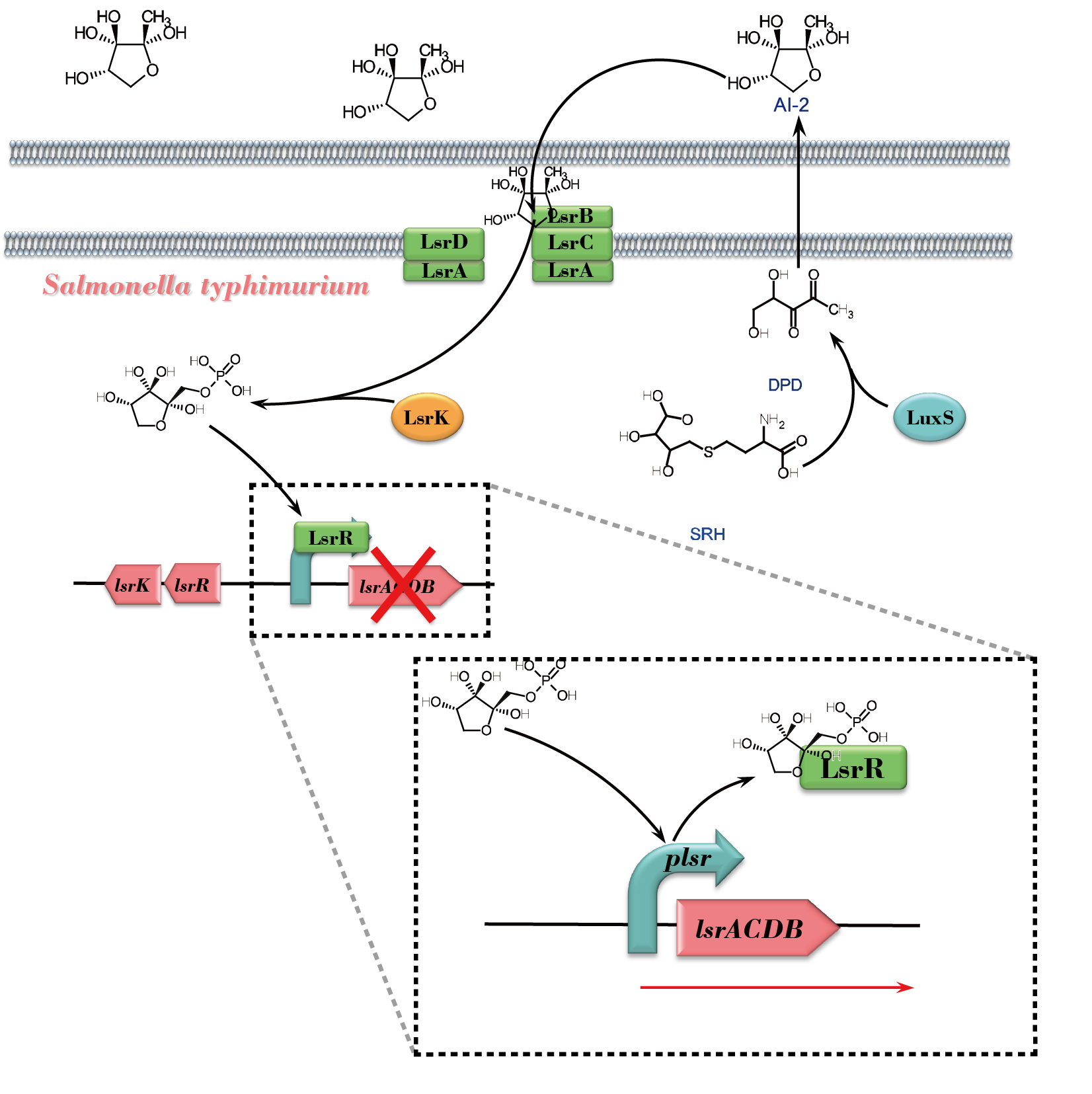Part:BBa_K1666004
LsrK of LuxS/AI-2 signaling pathway in Salmonalla
Quorum sensing is a process of bacterial cell-to-cell communication involving the production and detection of extracellular signaling molecules called autoinducers. And autoinducer-2 (AI-2) has been proposed to serve as a 'universal signal' for interspecies communication. In the LuxS/AI-2 signaling system of Salmonella Typhimurium, AI-2 response involves ATP binding cassette transporter encoded by genes named Lsr (LuxS regulated). And LsrK is the kinase which catalyzes the phosphorylation of autoinducer 2 (AI-2) to phospho-AI-2. In our project, we set this protein-coding part under a nisA promoter and try to integrate them in the genome of Lactobacillus or Lactococcus for the final purpose of constructing an integrated AI-2 response pathway of Salmonella in the engineered bacteria.
Usage and Biology
AI-2 is generated by many species of Gram-negative and Gram-positive bacteria. In a group of bacteria exemplified by Salmonella, AI-2 response involves lsr genes that encode ATP binding cassette-type transporter. LsrK catalyzes the phosphorylation of autoinducer 2(AI-2) to phospho-AI-2, which subsequently inactivates the transcriptional regulator LsrR and leads to the transcription of the lsr operon.

In our project, we set this protein-coding part under the regulation of a nisA promoter which can be activated by food-grade inducer, nisin. We linearized the related expression vectors and stably integrated them into the genome of the hosts. And together with other parts, we will construct a membrane channel for AI-2 generated by pathogens in the engineered bacteria.
Sequence and Features
- 10COMPATIBLE WITH RFC[10]
- 12COMPATIBLE WITH RFC[12]
- 21COMPATIBLE WITH RFC[21]
- 23COMPATIBLE WITH RFC[23]
- 25INCOMPATIBLE WITH RFC[25]Illegal AgeI site found at 61
- 1000COMPATIBLE WITH RFC[1000]
| biology | Salmonella typhimurium |

